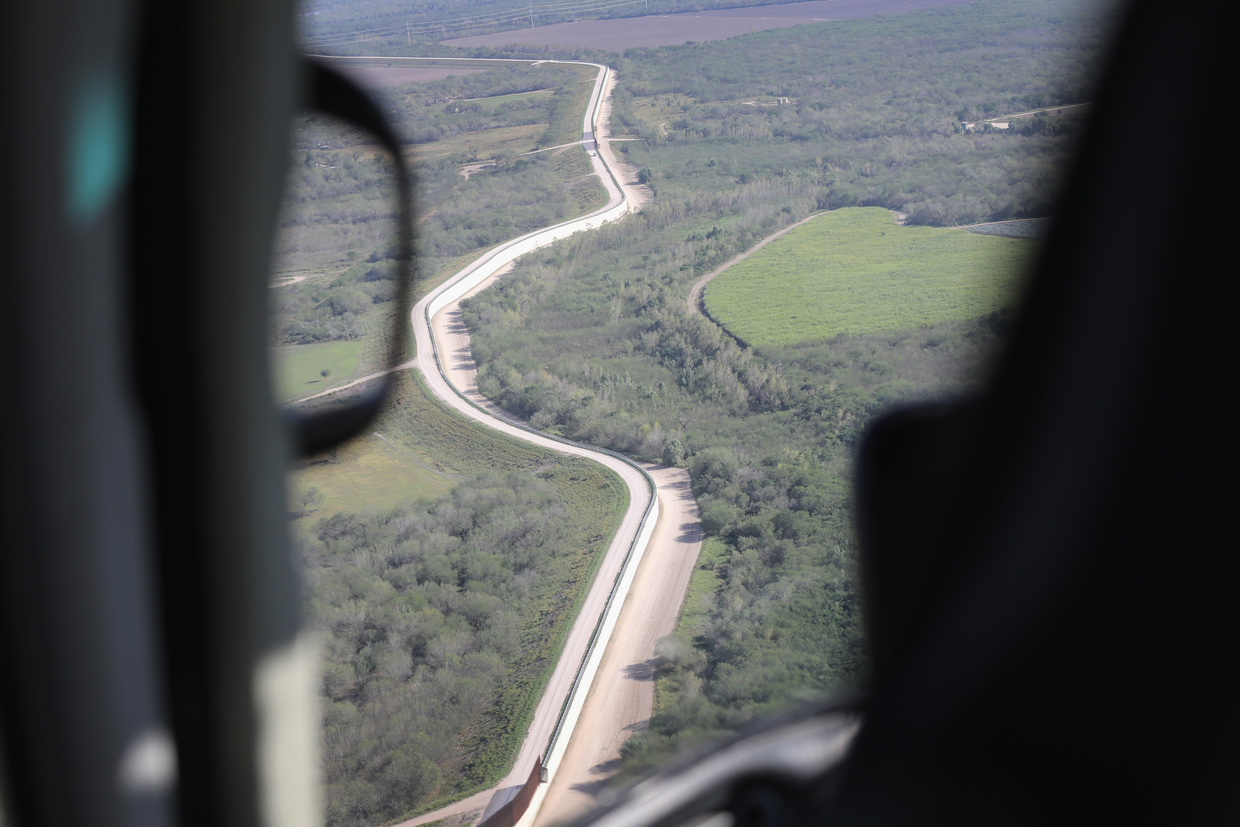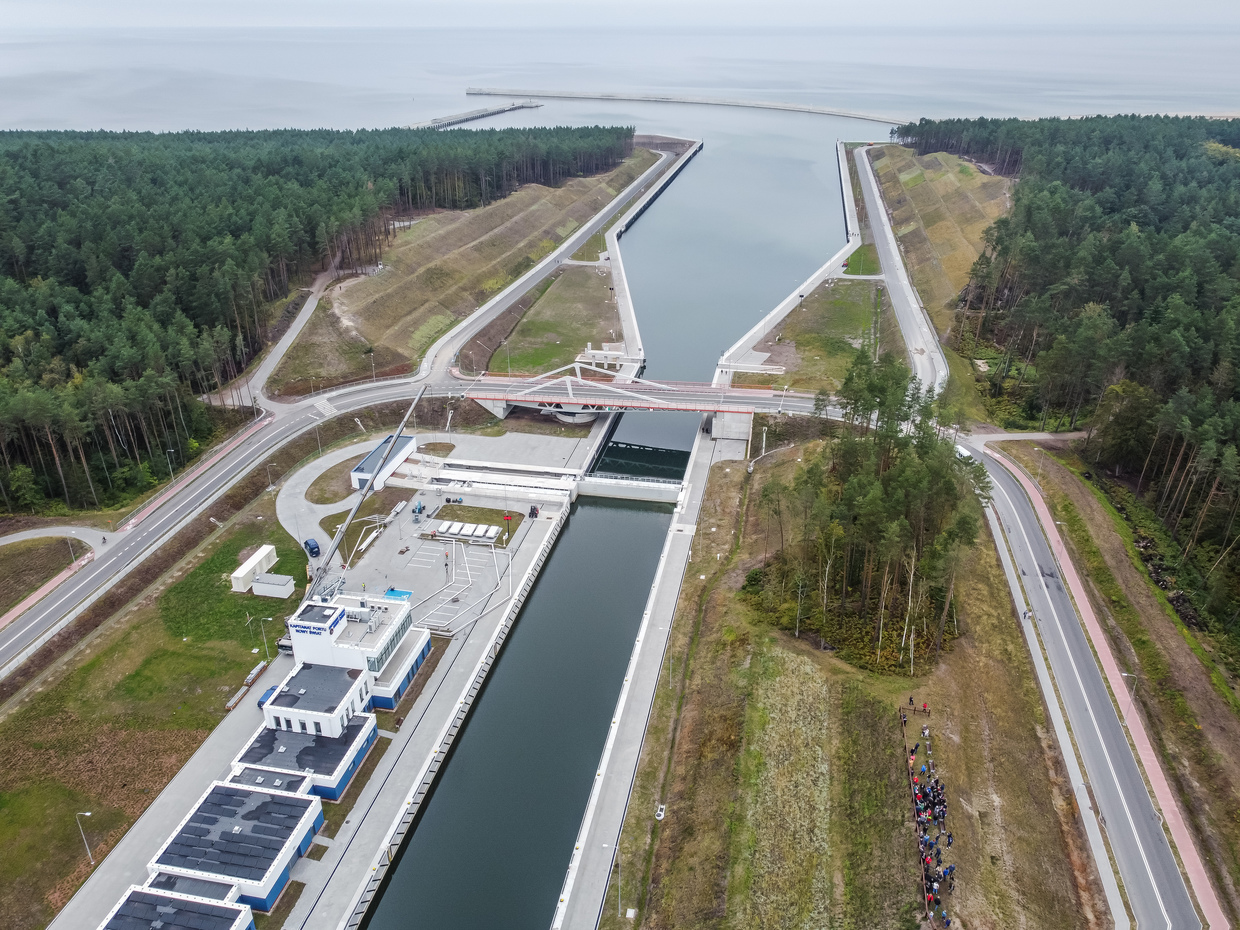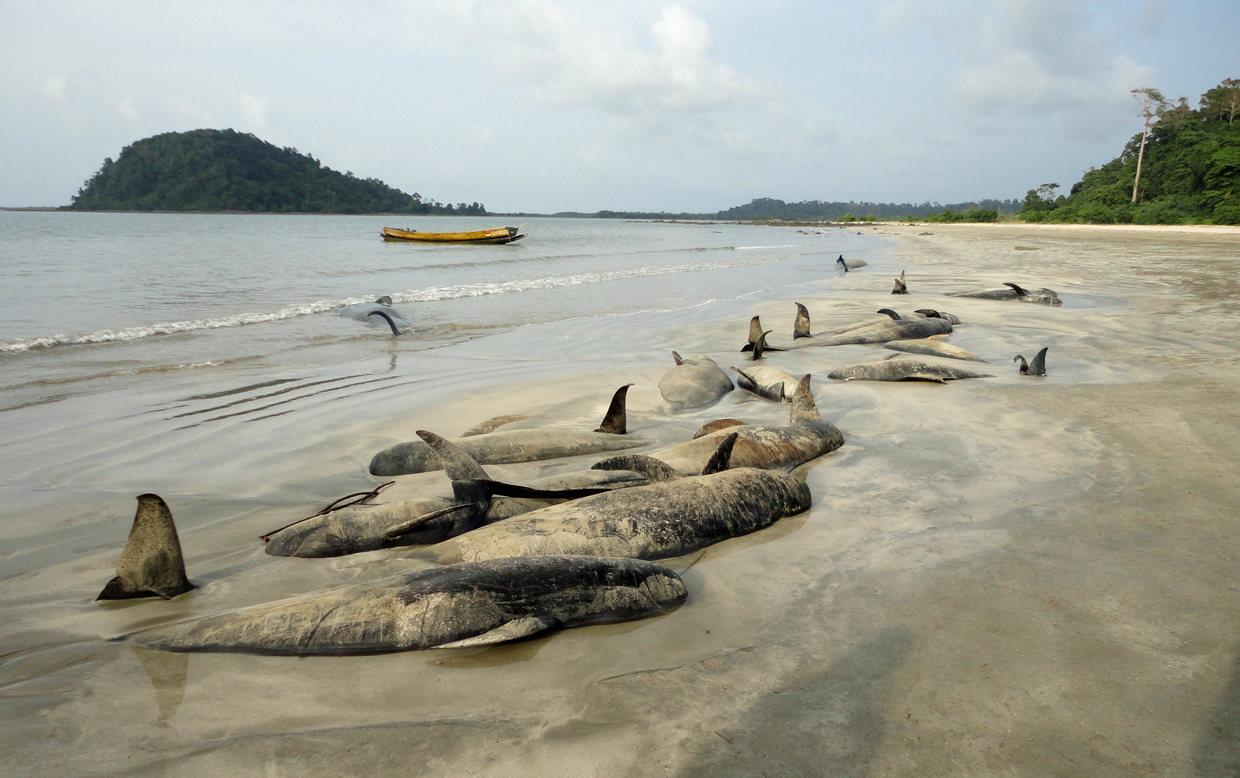From forests to fear: How national security is killing ecology in border regions

From the US-Mexico border and the Poland-Belarus border to India’s Andaman and Nicobar Islands, governments across the world are pushing mega-development projects at the cost of environmental and climate concerns on the pretext of securing strategic and national interests.
How governments push such projects in protected areas and regions is highlighted in ‘Threats to conservation from national security interests’, a study done lately by a group of researchers from Europe, the US, and India. It states that the US, Mexico, Poland, and India have forsaken environmental norms for national interests.
“There is a growing trend of nation states invoking national security and emergency declarations to build state-sponsored infrastructure projects, most commonly for border defense, energy production and transportation,” the study noted. “Established laws, regulations, and agreements for the protection of nature and cultural heritage within and between countries, are becoming secondary to national security, compromising the function of protected areas like national parks, wilderness areas, and biosphere reserves, which safeguard biodiversity, climate, and human health.”
According to the research, this is affecting biodiversity and is infringing upon indigenous rights. An example of the disruption of the movement of wild animals is the US border wall and its effect on the Mexican Grey Wolf and the Sonoran Pronghorn.
The practice is also in contravention of a 2022 United Nations resolution upholding the human right to a clean, healthy, and sustainable environment, which the countries mentioned in the study voted for.

Scenario in US and Europe
Anwesha Dutta, a researcher at Chr. Michelsen Institute in Norway and co-author of the paper, told RT that the study has documented how climate concerns are being overridden. “Governments are shying away from implementing environmental norms while carrying out new projects in eco-sensitive regions,” Dutta said.
The study showed how decades-long multinational cross-border endangered species recovery and rewilding programs were jeopardized by waivers of environmental protection laws to facilitate rapid construction of barriers at borders such as the US-Mexico one or the Poland-Belarus border.

The study highlights the US Fish and Wildlife Service’s decades-long joint binational recovery programs that track the Mexican Gray wolf (Canis lupus baileyi). “In 2021, a GPS satellite-collared wolf traveled 37 km along the border wall but was unable to cross into Mexico,” it said. “Conversely, in 2017, prior to border wall building, another collared wolf traveled over 1,000 km from Mexico and crossed into the US.”
The US report says that though the wolves have increased, genetic diversity remains low.
The research highlights that renewable energy megaprojects like the Pinacate Solar Plant in Mexico coupled with power transmission lines and road networks, likewise cast a large footprint on the land. They are carried out with “minimal to no environmental compliance under the guise of national security, while similar projects like Mexico’s Dos Bocas refinery and Poland’s Vistula Spit canal proclaim national sovereignty as justification for bypassing laws.”
The study stresses that there is a huge mismatch in hiking military expenditure vis-a-vis improvement in environmental policy stringency by the world’s largest economies. These decisions trivialize our dependence on functioning ecosystems, undermine democratic principles and environmental review protocols, and contradict the UN resolution on the human right to a healthy environment.

The study quoted the May 2022 letter of European Commission (EU) President Ursula von der Leyen to a European Parliament member. Leyen’s letter says that the “decisions on infrastructure at borders is the national responsibility of each Member State”.
She further stated that the Commission at the EU level “consistently supports efforts towards long-term sophisticated border management and on surveillance solutions as part of the ‘European integrated border management’ concept.” This means that the environmental concerns are being deemed secondary to “imperative reasons of overriding public interest or public safety.”
The EU Chief’s letter was in response to the question of the Polish-Belarusian border and the Białowieża Forest, a transboundary “UNESCO World Heritage site and one of Europe’s most intact forest ecosystems.”
“Geopolitical tensions are a reality as has always been and it is important that the government needs to realize that a stable environment is an absolute requirement for a good defense of the country,” said Mallika Bhanot, an environmental activist and a volunteer with Ganga Ahvaan, a Uttarakhand-based citizens’ forum.

Scenario in India
India’s amendment to the Forest Rights Act, the Siachen border and the Great Nicobar Island Project are mentioned in the study as examples of subversion of environmental concerns in the name of national security.
But there is a greater climate emergency (as it was rightly labeled by the UN in the biggest ever poll on the matter in 2021) related to overall infrastructure development in the Himalayan region. Last summer’s Himalayan disasters, including heavy rains and flash floods in Himachal Pradesh and Uttarakhand, the sinking of Joshimath town that displaced thousands, and the recent Silkyara Tunnel collapse in Uttarakhand are glaring examples of the emerging situation in India’s north.
The Siachen glacier, a trijunction of India, China, and Pakistan, who hold competing claims, has been a challenging battlefield for over thirty years now. The glacier, which is characterized by unusual flow and accumulation dynamics, affects the topography and combatants alike.
Increased human activity in the area has led to littering on glaciers which are already melting due to global warming and are facing losses to the englacial microbial community at the snout. Events in Siachen and similar activity across the Indo-China border in the Himalayas are now leading to the polluting of rivers at the source; these rivers quench the thirst of billions in the region.

The Himalayan region encompassing Siachen Glacier and Tibetan Plateau has now found a place as one of the WWF’s 200 areas “critical to global conservation.” “The down-wasting of the glacier has led to the destruction of habitats of the already-endangered snow leopard, Himalayan ibex, Himalayan black and brown bears and cranes,” the study said.
Commenting on the current situation, Bhanot suggested declaring eco-sensitive zones in the Himalayas. “Ensure that development in these areas is planned and regulated so that these areas remain conserved and continue to give the much-valued ecosystem services,” she added.
Environmentalists have also cautioned about the Great Nicobar Island project for the development of southern tip of the island in Andaman Sea. The project encompasses a transshipment port, an international airport, a 450 MVA gas and solar-based power plant and a greenfield township on over 160 sq km of land, of which 130 sq km comprises primary forest. The study calls it “pernicious to Indigenous communities, critical habitats, tectonic volatility and sand disaster vulnerability.”

The island in question is an Indigenous Reserve under the Andaman and Nicobar Protection of Aboriginal Tribes Regulation, 1956 with its 850 sq km area of the total 900 sq km area coming under its purview. The project, whose idea was first floated in the 1970s in the name of national security, was meant to protect India’s geo-political concerns amid ongoing tensions between China and neighboring countries in the South China Sea. It will result in the felling of over millions of trees in an ‘intact rainforest ecosystem’, experts have warned.
The project has added economic heft to the primary concern of national security; according to a Ministry of Ports, Shipping and Waterways announcement in November 2023, an intercontinental transshipment port at a cost of Rs 440 billion ($5.3 billion) is planned for a “holistic” development of Great Nicobar Island.
In January, Shipping Minister Sarbananda Sonowal announced that 11 firms had submitted letters of “expression of interest” for the project. Though a final cabinet approval, incorporating approvals from multiple ministries, is expected after the coming election, the project has been held up due to protests. In a letter to President Draupadi Murmu, 39 academics from 13 countries expressed fear that the indigenous Shompen people would be wiped out due to the project.

Can there be a middle-way?
“Balancing national security imperatives with environmental concerns is a complex challenge, particularly in regions of geopolitical sensitivity like the India-China border. While safeguarding sovereignty is paramount, sustainable development must be a concurrent priority,” according to Anjal Prakash, an IPCC author and clinical associate professor (research) at Bharti Institute of Public Policy, Indian School of Business (ISB).
He believes India can adopt a holistic approach by integrating eco-friendly technologies, conducting comprehensive environmental impact assessments, and engaging in transparent public discourse.
“Firstly, robust policies must be enacted to incentivize and accelerate the transition to renewable energy sources, fostering energy independence and reducing carbon emissions. Investments in climate-smart infrastructure, such as resilient urban planning and water management systems, are crucial for mitigating the impacts of extreme weather events,” said Prakash.
Manish Chandi, an alumnus of the Nature Conservation Foundation (NCF) who worked for two decades on an interface between communities and the natural environment in the Andaman and Nicobar Islands, told RT, “In their desire to bring in infrastructural and commercial development, the very foundations of the land on which such change takes place is ravaged and abused so badly that over the years, more and more investment is required to stem the ill-effects of such thoughtless irrational ‘development’.
“In the process, it isn’t development, but regression into a cycle of expenditure, repair, veneers, expenditures again and it just repeats and goes into a black hole-like spiral,” said Chandi.
The Government does not see it that way. In a Monday address at Jawaharlal Nehru University, Foreign Minister S. Jaishankar spoke of “seeking to rectify the long neglect of the border infrastructure, we have made the defence of the nation more effective.”
Experts, however, believe the governments should include more and more voices, especially those of local communities, academicians, researchers and other stakeholders, and hold discussions and negotiations at the time of policy formulation and implementation.
“Striking a balance between strategic objectives and environmental stewardship is imperative for India’s long-term resilience,” Prakash noted, adding that in navigating these dual imperatives, India can set “a global example” by demonstrating that national security and environmental sustainability are not mutually exclusive, but can be synergistically achieved for a resilient and prosperous future.













